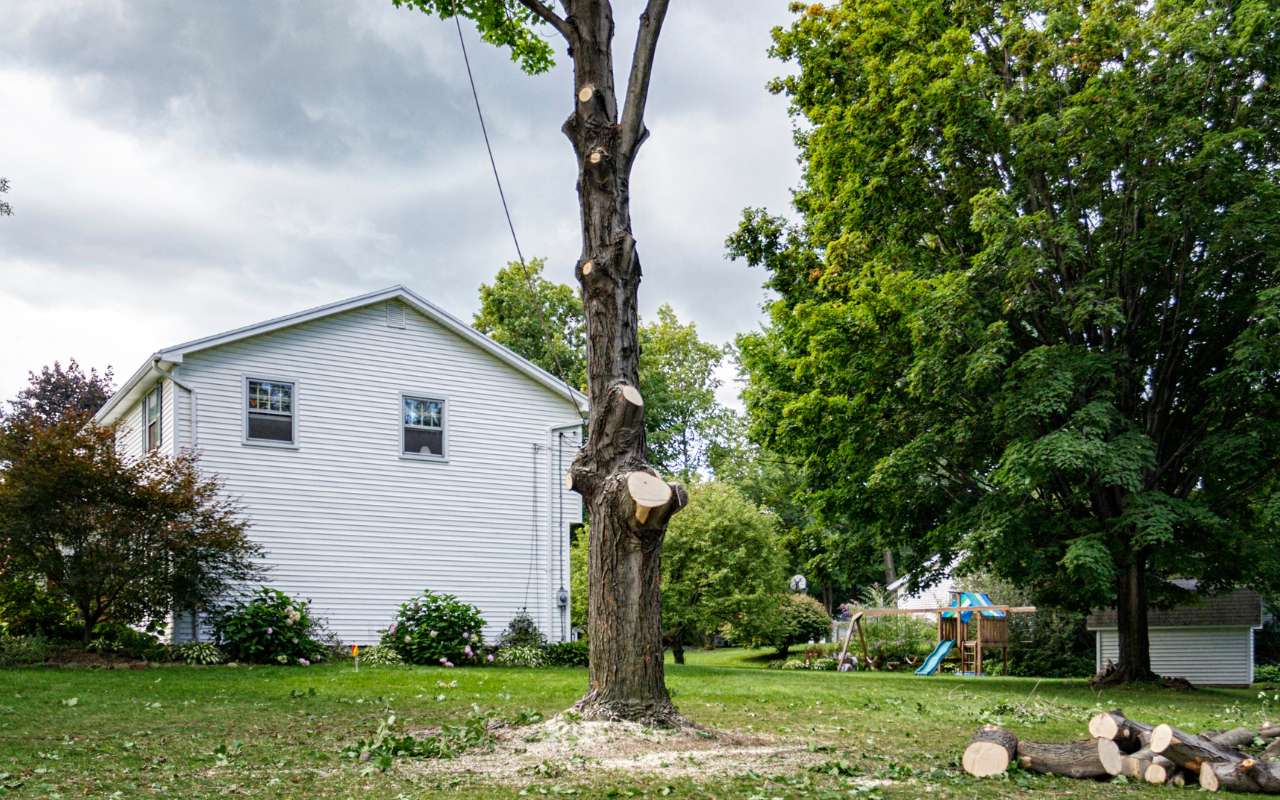
Removing a tree can be challenging and risky. In this Guide to Safely Removing Trees from Your Property, we’ll walk you through the process. Have you ever faced the dilemma of removing a tree without knowing how? Understanding the right steps ensures safety and efficiency. This guide will help you tackle this task with confidence.
Guide to Safely Removing Trees from Your Property
Removing a tree requires careful planning and execution. This guide will provide you with the necessary steps and tips for safely removing trees from your property.
Assessing the Situation
Before starting the removal process, assess the tree and its surroundings. Consider the following:
- Tree health: Check for signs of disease or decay.
- Proximity to structures: Note any buildings, power lines, or other obstacles nearby.
- Tree size: Determine if the tree is too large for DIY removal.
Gathering Essential Tools
Having the right tools is crucial for a safe tree removal. Ensure you have:
- Chainsaw: For cutting down the tree.
- Safety gear: Includes gloves, goggles, and a helmet.
- Rope: To guide the tree’s fall.
- Wedges: Helps direct the tree’s fall.
Preparing for Tree Removal
Preparation is key to a successful tree removal. Follow these steps:
- Clear the area: Remove any debris or obstacles around the tree.
- Plan the fall direction: Choose a clear path for the tree to fall.
- Notify neighbors: Inform them of your plans to ensure safety.
Cutting Down the Tree
- Create a notch cut: Make a V-shaped cut on the side facing the fall direction.
- Make the felling cut: On the opposite side, cut horizontally until the tree begins to fall.
- Use wedges if needed: Insert them into the felling cut to guide the tree’s fall.
Ensuring Safety During Removal
Safety should always be your top priority. Follow these tips:
- Work with a partner: Never attempt tree removal alone.
- Stay aware of your surroundings: Keep an eye on the tree and any potential hazards.
- Avoid cutting in bad weather: Wind and rain can make the process more dangerous.
Dealing with the Stump
After the tree is down, you need to remove the stump. Here are some methods:
- Grinding: Use a stump grinder for quick removal.
- Chemical removal: Apply stump remover and wait for it to decompose.
- Manual removal: Dig around the stump and cut the roots with a saw.
Cleaning Up
Once the tree and stump are removed, clean up the area:
- Dispose of branches and debris: Use a wood chipper or haul them away.
- Fill the hole: Use soil to fill in the hole left by the stump.
- Restore the area: Plant grass or another tree to improve the landscape.
When to Call a Professional
Some tree removals are too complex for DIY. Consider hiring a professional if:
- The tree is very large: Professionals have the equipment for large trees.
- The tree is near power lines: This requires specialized skills and safety measures.
- You feel unsure: If you’re not confident, it’s safer to hire an expert.
Conclusion
Tree removal can be safe and effective with the right knowledge and tools. By following this Guide to Safely Removing Trees from Your Property, you can tackle this task with confidence. Remember, safety is paramount, so don’t hesitate to call a professional if needed.
